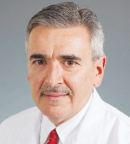In patients with early breast cancer, the presence in the blood of circulating tumor cells 5 years after diagnosis increases the risk for recurrence nearly 20-fold, researchers reported at the 2017 San Antonio Breast Cancer Symposium.1
“We found that a single positive circulating tumor cell assay result, 5 years after diagnosis, provides independent prognostic information for late recurrence,” said Joseph A. Sparano, MD, Associate Director for Clinical Research at the Albert Einstein Cancer Center and Associate Chairman of Medical Oncology, Montefiore Medical Center, New York. “This provides proof of concept that liquid biopsy–based biomarkers may be used to stratify risk for late recurrence and possibly to inform treatment or clinical trial options.”
The study stemmed from evidence that circulating tumor cells have prognostic value in metastatic breast cancer and also in earlier stages of disease. Dr. Sparano and his colleagues were particularly interested in the role of circulating tumor cells in women diagnosed with hormone receptor–positive, HER2-negative, stage II/III breast cancer, since this population is at increased risk for late recurrence. A test that could identify women at highest risk might help clinicians decide how aggressively to treat, he said.
Data From ECOG-ACRIN E5103 Trial
The investigators took blood samples from patients previously enrolled (and still being followed) in the ECOG-ACRIN E5103 trial, which evaluated the addition of bevacizumab (Avastin) to adjuvant chemotherapy. The current study population included 547 recurrence-free patients who were assessed by the CELLSEARCH Circulating Tumor Cell Kit between 4.5 and 7.5 years following their diagnosis and treatment. Two-thirds had hormone receptor–positive disease, and most had been or still were receiving endocrine therapy.
Altogether 4.8% of the samples had evidence of circulating tumor cells, defined as at least 1 cancer cell/7.5 mL of blood. By hormone receptor status, circulating tumor cells were seen in 5.1% of hormone receptor–positive patients and in 4.1% of hormone receptor–negative patients.
Recurrences in Circulating Tumor Cell–Positive Patients
After a median follow-up of 1.8 years from circulating tumor cell assay, there were 14 distant recurrences among the 353 hormone receptor–positive women (4.0%) and 1 locoregional recurrence among the 193 hormone–receptor negative subjects (0.5%). In the hormone receptor–positive patients (who became the focus of the analysis), Dr. Sparano reported the following key findings:
The median time to recurrence was 1.6 years after circulating tumor cell assay among patients who tested circulating tumor cell–positive.
The hazard ratio for recurrence was 21.7 (P < .001) for circulating tumor cell–positive vs circulating tumor cell–negative groups (18.1 in a multivariate analysis, adjusting for clinical covariates).
At 2 years, the positive predictive value of circulating tumor cells in the hormone receptor–positive groups was 35%, and the negative predictive value was 98%; a positive assay was not associated with recurrence in the hormone receptor–negative subset, although there were no distant recurrences in this group, in which late distant recurrence is much less common.
Looking Toward Clinical Utility
“This study provides proof of concept for the clinical validity of circulating tumor cells. It’s the highest level of evidence supporting circulating tumor cells as a prognostic biomarker for late recurrence in hormone receptor–positive breast cancer patients. It shows very high-level risk stratification (20-fold increased risk), which far surpasses other biomarkers,” Dr. Sparano said.

This provides proof of concept that liquid biopsy–based biomarkers may be used to stratify risk for late recurrence and possibly to inform treatment or clinical trial options.— Joseph A. Sparano, MD
Tweet this quote
“This supports the concept of a new paradigm—which is to have a second decision point for tailoring therapy based on a biomarker that is obtained not at diagnosis, but 5 years after diagnosis, and that is not based not on the patient’s pathologic features or tolerance to prior therapy,” he said. “But we still have work to do. We need further study to nail down the clinical utility of this information.”
Such “clinical utility” might be in the form of sparing extended adjuvant endocrine therapy for patients with negative circulating tumor cell results and offering novel treatments or clinical trials to patients in whom circulating tumor cells are identified. The circulating tumor cell assay also needs to be compared with other emerging approaches, such as circulating tumor DNA, or perhaps used in combination with them, he said.
Dr. Sparano also acknowledged that the ultimate impact of this information on outcomes remains unclear. “It’s still uncertain as to whether any intervention will help prevent recurrences from happening,” he said. ■
DISCLOSURE: Dr. Sparano reported no conflicts of interest.
REFERENCE
1. Sparano JA, O’Neill A, Alpaugh K, et al: Circulating tumor cells and late recurrence of breast cancer. 2017 San Antonio Breast Cancer Symposium. Abstract GS6-03. Presented December 8, 2017.
MORE ON CIRCULATING TUMOR CELLS
For more on stage II/III breast cancer and circulating tumor cells, see an interview with Joseph A. Sparano, MD, on The ASCO Post Newsreels at www.ascopost.com/videos.



